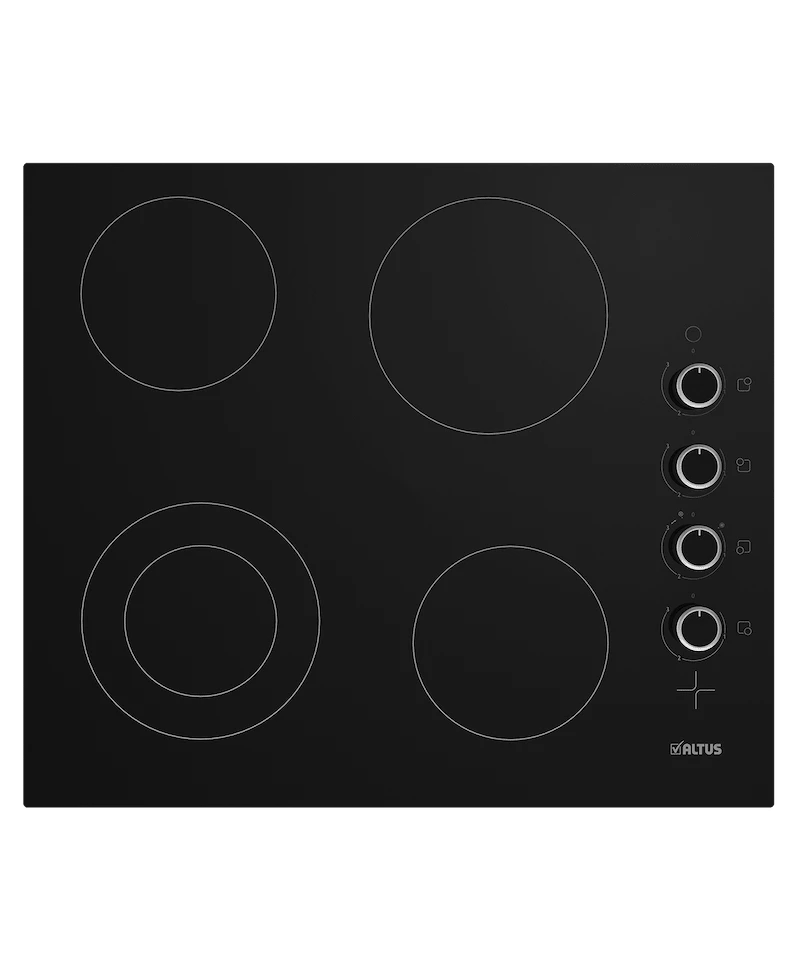1. What is a built-in cooktop?
A built-in cooktop is one that is positioned in a kitchen cabinet or on a countertop. Any cooktop that is not directly on the floor can be called a built-in cooktop. A built-in cooktop brings up a plethora of customisation options in the kitchen. For anyone trying to maximise kitchen space, the appeal of a built-in cooking system is enhanced by the array of sizes available and the flexibility of installation. Built-in cooking also gives the kitchen a more distinguished, seamless appearance. Built-in cooktops have a clean and flat surface design, making them the greatest choice for a kitchen that doesn't want to look too bulky.
2. What are ceramic glass cooktops? Which are the different types of ceramic glass cooktops?
Ceramic glass cooktops, otherwise known as ceramic cooktops, glass cooktops, or smooth tops, are the newest and most innovative way to emulsify sauces and sear your favourite vegetables. A ceramic cooktop is any cooktop with a smooth surface made of tempered ceramic glass. A ceramic glass cooktop is a type of cooktop composed of heat-hardened clay material to form a ceramic glass surface.
Even though they aren't exactly cutting-edge tech, these appliances become more efficient and convenient each year. Ceramic cooktops are the right blend of design and function, offering quicker heating than gas, greater cooking power than electric coils, and a low-profile yet stylish design.
There are 4 types of ceramic glass cooktops –
- Radiant employs heated metal coils beneath a sheet of ceramic glass.
- Halogen employs halogen lights instead of using metal to generate heat.
- Semi-halogen uses a combination of metal coils and halogen bulbs.
- Induction cooktops heat up rapidly and boil water twice as fast as other cooktops on average. That's because, unlike a standard cooktop, it doesn't require a heat source to transfer heat to the pan; instead, the interaction between magnets and metal heats the pan directly, thus converting it into a burner. Even if the electricity is turned on, the cooktop will not heat up until you place a pan on it.
3. What are the benefits of ceramic glass cooktops?
Apart from being sleek, stylish, and trendy, ceramic glass cooktops have other useful benefits such as –
- Cleaning a ceramic glass cooktop is significantly easier.
- When the ceramic glass cooktop is heated, heat indicators appear.
- Vitroceramic induction cooktops don't even start heating up until a pan is placed on top of them.
- These cooktops even turn off after a set amount of time, making it less likely for inquisitive kids to get wounded while helping out in the kitchen.
- Additionally, ceramic glass cooktops avoid the need for highly unsafe gas lines to run through your kitchen. To operate them, all you need is an electrical connection.
Read more about ceramic cooktops and other types of cooktops.
4. Do ceramic glass cooktops scratch easily?
Scratches from pots, pans, and utensils are sadly common on ceramic glass cooktops. A scratch on a glass cooktop, like all glass frames and items, is impossible to completely erase. Glass cooktop scratches can, however, be significantly reduced in appearance and feel. The occurrence of scratches can be reduced in a variety of methods, including:
- Investing in a ceramic glass cooktop stove cover.
- Following the manufacturer's maintenance and cleaning guidelines, thereby extending the life of your appliances.
- Cleaning up spills as soon as they occur.
- Maintaining the cleanliness of the bottoms of pots and pans.
- Picking pans up instead of sliding them back and forth across the glass.
- Avoid using cookware than can augment scratching.
- Skip strong cleansers and rough scrubbers.
5. How do you clean a ceramic glass cooktop?
A dirty ceramic stovetop is not only unsightly but can also become a health hazard for everyone in the house. Ceramic glass finish cooktops are simple to clean because they are made of one-piece and hence, crumbs and liquids don't fall into tricky areas. You may clean the cooktop by removing the burner caps and trivets and clean them separately to make it seem brand new.
While an all-purpose cleaner is useful for removing new spills and stains from the cooktop, failing to do so on a routine basis and in a timely manner will damage the otherwise shining surface. To avoid the accumulation of food residue that might damage a polished surface, adequate maintenance and cleaning are essential.
Cleaners designed specifically for ceramic glass cooktops work best for majority of the models. Apart from that, spraying a cooled ceramic glass cooktop with warm water, letting it soak for 15mins and then wiping it up with a damp washcloth is another good option for cleaning the glass cooktop.
6. What type of cookware is best for a ceramic cooktop?
Keep in mind that the primary material of a ceramic glass cooktop is glass, so you have to treat it carefully. Scratches are more frequent on this type of cooktop. Even the costliest ceramic glass cooktops can be scratched or fractured, no matter how durable they appear. To save yourself the hassle and expense, ensure that you’re using the proper cookware for your ceramic glass cooktops.
Pans with bottoms made of stainless steel, titanium, aluminium, or copper are all appropriate cookware for cooking on a ceramic glass cooktop. After each use, promptly wipe away any residue or stains on the cookware. Porcelain and enamel pots function well, but if left to boil dry, they might melt and stick to the burner. Avoid scratching caused by glass or stone cookware.




